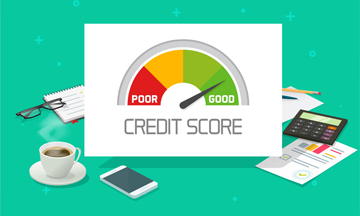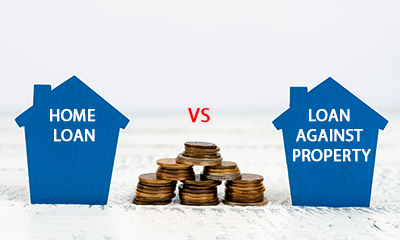How to Secure a Home Loan without a Salary Slip

Table of contents
-
How to Secure a Home Loan without a Salary Slip
-
-Understanding How to Secure a Home Loan Without a Salary Slip
-
-Alternative Documents for Loan Approval
-
-
-
Role of Bank Statements in Loan Approval
-
Risks and Considerations
-
The Impact of Credit Scores
-
Conclusion
How to Secure a Home Loan without a Salary Slip
Applying for a home loan without a salary slip comes with some challenges. Banks usually require proof of income to verify creditworthiness and a salary slip is commonly used for this. However freelancers or small business owners usually find this challenging. While they may have an income, they may not have a salary slip to prove it.
But worry not; there are alternative documents and methods that we can use here. Read on to learn more about how to secure a home loan without a salary slip.
Understanding How to Secure Home Loan Without Salary Slip
Salary slips are banks' most widely accepted form of income proof because they demonstrate a consistent income stream that can be used for EMI repayment. Banks, however, accept alternative documentation to meet the requirements for applicants who do not receive a regular salary. In such a case, the lender will want an alternative document that shows your repayment capability.
Self-employed individuals may provide their business income tax returns, P&L statements, and balance sheets for the previous years. Individuals who receive their income from contractual arrangements may submit documents such as rent agreements and receipts.
Pensioners may show proof of a regular pension credit through bank statements, pension slips, or pension payment orders. NRIs can submit their bank statements and contracts for employment abroad. Farmers can submit documentation of their land, crops, sales realisation, etc. Below is a detailed list of commonly accepted documents.
Of all the above documents, bank statements play the most important role. Let us learn why.
Role of Bank Statements in Loan Approval
Bank statements are crucial for a home loan without a salary slip, as they show the applicant’s ability to repay the loan.
In the bank statement, the lender looks for steady monthly credits, which signify that the applicant has a regular income stream. The lender also checks for a minimum balance in the account to determine the availability of funds. A healthy average balance qualifies for good liquidity in repaying the home loan EMI. Bank statements disclose borrowers’ EMIs and other monthly liabilities, like SIPs. Large and irregular transactions may have to be validated with separate documents.
However, some risks must be considered if you are self-employed and planning to secure a home loan without a salary slip.
Risks and Considerations
-
Without salary slips, the lender perceives a high chance of default as the borrower’s repayment capacity is not evident. Hence, lenders may charge high interest rates.
-
In some cases, the lender may only approve a lower loan amount than the applicant requested.
-
The lender may ask for extensive documentation. Hence, the borrower should have all the documents in readiness.
-
For self-employed individuals, lenders may only approve the loan if they see stability in your bank statement.
-
The borrower may not be eligible for a top-up or a similar loan during the tenure.
It is extremely important to ensure that you have the means to repay the loan. This is especially true in the case of home loans due to their longer tenures. Another important factor that can contribute to your loan approval is your credit score.
The Impact of Credit Scores
A credit score is a 3-digit number between 300-900 that tells lenders about your repayment behaviour. It is based on your past loans and credit card history. Higher credit scores improve your chances of getting a home loan approved. Good scores between 750-900 indicate you have repaid debts responsibly in the past. This makes lenders more willing to lend money to you. Lower credit scores below 650 make getting a home loan approved difficult. It signals past defaults or delays in repayments. Lenders see you as a riskier borrower.
Higher credit scores allow you to negotiate better interest rates. Good scores show lenders you are responsible. Hence, they offer lower interest rates to good scorers. Lower rates reduce your overall repayment burden. Lower scorers have to pay higher interest rates. Lenders see higher risk in lending to them. To compensate for this, they charge higher interest rates for low scorers.
FAQs
Does a higher credit score qualify me for a home loan without income proof by default?
No, you will still need to prove your creditworthiness to the bank. The abovementioned documents, like bank statements, will be useful for this.
How can I apply for a home loan without income proof as a freelancer?
You can provide your bank statements, tax returns, and invoices to showcase your earnings and financial stability when applying for a loan. Lenders can assess your repayment capacity based on steady credits in your account and business generated.
Is a home loan without income proof unsecured?
No, home loans without income proof, such as salary slips, are not unsecured loans. Even though the lender may occasionally request more substantial documentation and higher collateral, the home loan remains secured by the property.
Conclusion
Getting a home loan without a salary slip is challenging but possible with the right documentation. Applicants should be prepared to provide extensive alternate proofs to demonstrate income stability and repayment capacity. Maintaining a good credit score also helps improve the chances of loan approval without salary slips. With diligent document preparation, even non-salaried segments can fulfil their dream of owning a home. Contact Aadhar Housing Finance today to get started with your home loan journey!
- Aadhar Housing Finance has been awarded and recognised as ‘The Best Brand 2021’ at the 4th Edition of ‘The Economic Times – Best Brands 2021’ held at Sahara Star in Mumbai on 21st December, 2021.
- Aadhar Housing Finance was conferred with the 'CSR Times Award 2021' for the successful initiatives implemented under its CSR project, ‘Aayushmaan Aadhar’ at the 8th National CSR E-Summit, on 17th December, 2021.
- Aadhar Housing Finance was conferred with 'India CSR Leadership Award 2021' on 10th Dec, 2021 in 'Community Health' category for its impactful community-centric initiatives conducted under Aayushman Aadhar project.
- Aadhar Housing Finance has received ‘Maharashtra State Best Employer Brand Award, 2021’ at the 16th Employer Branding Awards hosted on 23rd Nov, 2021 by World HRD Congress for our exemplary work in HR. Aadhar has translated and combined vision with action leading to better people strategies and cultivation of competencies in order to enable the organization to be future ready.
- Aadhar Housing Finance Ltd bagged 5 awards across below categories at ‘Banking Frontiers NBFC Awards & Conference 2021’ (DNA Awards 2021) virtual summit held on 20th Aug, 2021. 1) Best Cyber Security Initiative - 1st Prize 2) Best API Initiative - 1st Prize 3) Best Omnichannel CX Initiative - 2nd Prize 4) Best Cloud Initiative - 2nd Prize 5) Esteemed Trophy (IT & Digital Group)
- Awards & Recognition: We received two prestigious awards at the 7th Edition of ‘National Awards For Excellence in BFSI 2021’ which was held virtually on 26th Aug 2021, in mentioned categories: 1) Aadhar Housing Finance Ltd received the ‘Affordable Housing Finance Company of the Year’ award, 2) Shri Deo Shankar Tripathi, MD & CEO, Aadhar Housing Finance Ltd has was conferred with ‘CEO of the Year’ award.
- Awards & Recognition: For the Second consecutive year, Aadhar Housing Finance has been certified as a ‘Great Place To Work’ by Great Place To Work Institute, a Global authority on recognizing high-trust and performance driven culture at workplaces.
- Awards & Recognition: Aadhar Housing Finance is certified as a ‘Great Place To Work’ by Great Place To Work Institute (India). This is a significant milestone for Team Aadhar as ‘The Great Place to Work Model’ is the world’s most researched, accepted and sustainable definition of a great workplace from an employee’s point of view. It is a comprehensive framework encompassing the overall employee experience ecosystem.
- Awards & Recognition: Aadhar Housing Finance won for the 3rd year in a row at The Outlook Money Awards. Team Aadhar received the Silver award in the Affordable Housing category at the Outlook Money Conclave held in Mumbai on 27th Feb, 2020.
- Awards & Recognition: Shri Deo Shankar Tripathi, MD & CEO, Aadhar Housing Finance received the ‘Top Most Influential BFSI Leaders’ award at the World BFSI Congress & Awards, in Mumbai on 14th Feb 2020.
- Awards & Recognition: Shri Deo Shankar Tripathi, MD & CEO, Aadhar Housing Finance received ‘the NBFC Leadership Award 2020’ at the 8th NBFC 100 Tech Summit held in Mumbai by Banking & Finance Post and Elets on 23rd January 2020.
- Awards & Recognition: The Aadhar Annual Report 2018-19 wins all India 3rd Prize in the PRSI National Awards 2019 at the 41st All India Public Relations Conference – Hyderabad
- Awards & Recognition: Aadhar Housing Finance is one of the ‘Best BFSI Brands 2019’: Aadhar Housing Finance received ‘The Economic Times Best BFSI Brands 2019’ award at the India-UAE Strategic Conclave 2019 held in Dubai on 15th October, 2019
- Awards & Recognition: Aadhar Housing Finance received ‘The affordable Home Loan Provider Of The Year 2018’ award from Union Minister Shri Nitin Gadkari at Outlook Money Conclave in Mumbai on 12th March, 2019 for the exemplary work in supporting the ‘Housing for All’ mission in India.
- Aadhar Housing Finance received the Prestigious ‘PMAY Empowering India Award 2019’ from Union Minister Shri Hardeep Singh Puri in Delhi on 5th March, 2019 for its exemplary work in supporting the ‘Housing for All’ mission in India.
- Dun & Bradstreet included Aadhar Housing Finance in 'India's Leading BFSI Companies 2019' list. The report was published by Dun & Bradstreet Information Services in March, 2019.
- Aadhar is declared one of the 1) ‘DREAM COMPANIES TO WORK FOR’ (Financial Services) and 2) ‘DREAM EMPLOYER OF THE YEAR’ presented by ET Now on 16th Feb, 2019 at the World HRD Congress in Mumbai.
- Shri Deo Shankar Tripathi, MD & CEO, Aadhar Housing Finance was recognized and felicitated as one of ‘100 Top Most Influential BFSI Leaders’ at the ‘World BFSI Congress’ held in Mumbai on 14th Feb, 2019.
- Aadhar Housing Finance bagged the ‘Most Promising Brand For Housing Finance’ award at the ‘World BFSI Congress’ presented by ET Now in Mumbai on 14th Feb, 2019.
- Aadhar Housing Finance won ‘Prestigious Brands of India 2019’ award at the conference held at Sahara Hotel in Mumbai on 12th Feb, 2019. The list of prestigious brands was judged and presented by BARC (Brand Advertising Research and Consulting), a global brand consultancy firm and ERTC Media, one of India’s leading independent media consulting & brand listing organisations. The recognition solidifies Aadhar as a leader within housing finance segment across various parameters such as brand recall, impact, trust, positioning, growth, reach, and innovation.
- Aadhar Housing Finance won the prestigious Finnoviti 2019 award at ‘Finnoviti Awards & Conference’ presented by Banking Frontiers and their Knowledge Partner Deloitte in Mumbai on 25th January, 2019 for innovative distribution and referral model named ‘Aadhar Mitra’.
- Aadhar Housing Finance bagged 2 prestigious awards at the ‘Banking, Financial Services & Insurance Awards’ presented by ABP News in Mumbai on 28th November, 2018:
- Housing Finance Company of the Year (Medium and Small) – for our exemplary work in the affordable housing finance segment.
- Marketing Campaign of the Year – for our recent brand campaign #GharBanegaTohDeshBanega.
- Aadhar MD & CEO awarded the ‘BFSI Leadership Award’ in Nov 2018 by ‘The Banking and Finance’ magazine and ‘elets’.
- Aadhar MD & CEO awarded the ‘Certificate of Excellence’ under “30 most innovative Business Leaders to watch in 2018” in July 2018 by ‘The CEO Magazine’.
- Aadhar receives the Award as the “Best Affordable Home Loan Provider of the Year 2017” at the ‘Outlook Money Awards’ March 2018.
- Aadhar CEO receives the ‘Inclusive Business Leaders Award’ from International Finance Corporation (IFC) for Aadhar’s exemplary work in Inclusive Business at the 2012 Inclusive Business Leaders Forum in Tokyo, Japan.
Report











